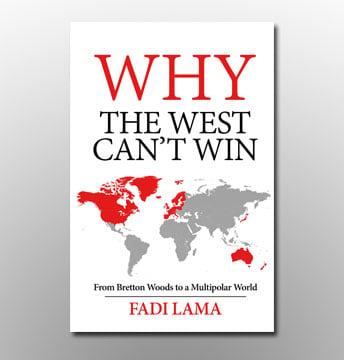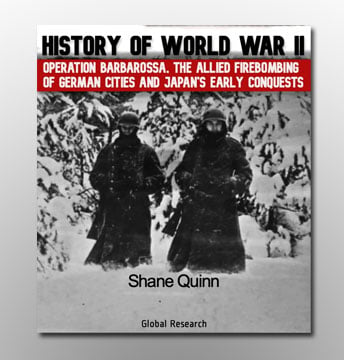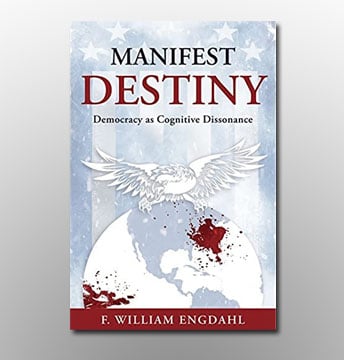All Global Research articles can be read in 51 languages by activating the “Translate Website” drop down menu on the top banner of our home page (Desktop version).
To receive Global Research’s Daily Newsletter (selected articles), click here.
Follow us on Instagram and Twitter and subscribe to our Telegram Channel. Feel free to repost and share widely Global Research articles.
***
August 11, 2022, the U.S. Centers for Disease Control and Prevention reversed its COVID-19 guidelines, thereby vindicating every “misinformation spreader” out there
The CDC is now advocating for taking personal responsibility and for everyone to decide for themselves “which prevention behaviors to use and when (at all times or at specific times), based on their own risk for severe illness and that of members of their household, their risk tolerance, and setting-specific factors”
The CDC is also giving up on discrimination based on COVID jab status, stating, its “COVID-19 prevention recommendations no longer differentiate based on a person’s vaccination status because breakthrough infections occur.” They also admit natural immunity exists and works
Testing is now reserved for those who “are symptomatic, or have a known or suspected exposure to someone with COVID-19,” isolation is only for those who are symptomatic and have tested positive, and contact tracing is now restricted to health care settings and select “high-risk congregate settings”
The CDC’s about-face appears to be politically motivated, to give the Biden administration a “win” before the midterm elections. Post-election plans include “the biggest vaccination campaign in history,” so tyrannical overreaches may later resume, even as mounting data show the COVID shots are causing depopulation
*
Without fanfare, the U.S. Centers for Disease Control and Prevention, August 11, 2022, reversed all its COVID-19 guidelines. In fact, many have noted it appears the CDC wanted to bring as little attention to it as possible.1 This is understandable, considering the new guidelines more or less admit the original rules were in error, without actually stating as much.
The new guidance is listed in the CDC’s Morbidity and Mortality Weekly Report (MMWR) under the title, “Summary of Guidance for Minimizing the Impact of COVID-19 on Individual Persons, Communities, and Health Care Systems — United States, August 2022.”2 As noted by Jeffrey Tucker, founder and president of the Brownstone Institute:3
“It would have been fascinating to be a fly on the wall in the brainstorming sessions that led to this little treatise. The wording was chosen very carefully, not to say anything false outright, much less admit any errors of the past, but to imply that it was only possible to say these things now.”
The CDC insists that while COVID-19 infection continues to be a reality around the world, “high levels of vaccine- and infection-induced immunity and the availability of effective treatments and prevention tools have substantially reduced the risk for medically significant COVID-19 illness … and associated hospitalization and death.”
Consequently, COVID countermeasures that create “barriers to social, educational, and economic activity” can be ditched and everything can go back to normal.
CDC Introduces Personal Responsibility
Considering how hard health officials have fought to segregate, bully, demonize and dehumanize people who didn’t agree with their tyrannical and irrational COVID measures over the past 19 months, the new guidelines are refreshing, but they’re still like a slap in the face. First and foremost, the CDC is now suddenly advocating for taking personal responsibility — for everything:4
“Persons can use information about the current level of COVID-19 impact on their community to decide which prevention behaviors to use and when (at all times or at specific times), based on their own risk for severe illness and that of members of their household, their risk tolerance, and setting-specific factors …
Education and messaging to help individual persons understand their risk for medically significant illness complements recommendations for prevention strategies based on risk.”
Individual risk assessment and risk-based countermeasures are both something we “misinformation spreaders” have called for from the beginning. The risk is not identical for all; hence, risk reduction strategies should not be uniformly applied. Finally, 19 months late, the CDC agrees.
Under the subhead, “Protecting Persons Most at Risk for Severe Illness,” the CDC now takes a page straight out of The Great Barrington Declaration and recommends focused protection, meaning protecting those “at particularly high risk … because of older age, disability, moderate or severe immunocompromise, or other underlying medical conditions.”
Need anyone be reminded that doctors and scientists have been defamed and dragged through the mud for saying this? And Dr. Anthony Fauci, director of the National Institutes of Allergy and Infectious Diseases, and his former boss, Dr. Francis Collins, then-director of the National Institutes of Health, were the masterminds behind the effort to discredit and take down the authors of the Barrington declaration.5
CDC Reneges on Discrimination
The CDC is also giving up on discrimination based on COVID jab status:6 “CDC’s COVID-19 prevention recommendations no longer differentiate based on a person’s vaccination status because breakthrough infections occur …”
They even admit that “persons who have had COVID-19 but are not vaccinated have some degree of protection against severe illness from their previous infection,” and therefore are not to be treated any differently than someone who has received the COVID jab. As noted by Tucker:7
“Remember when 40% of the members of the black community in New York City who refused the jab were not allowed into restaurants, bars, libraries, museums, or theaters? Now, no one wants to talk about that.
Also, universities, colleges, the military, and so on — which still have mandates in place — do you hear this? Everything you have done to hate on people, dehumanize people, segregate people, humiliate others as unclean, fire people and destroy lives, now stands in disrepute.
Meanwhile, as of this writing, the blasted US government still will not allow unvaccinated travelers across its borders! Not one word of the CDC’s turgid treatise was untrue back in the Spring of 2020. There was always ‘infection-induced immunity,’ though Fauci and Co. constantly pretended otherwise.
It was always a terrible idea to introduce ‘barriers to social, educational, and economic activity.’ The vaccines never promised in their authorization to stop infection and spread, even though all official statements of the CDC claimed otherwise, repeatedly and often.”
Testing, Isolation and Contact Tracing Rules Reversed
And what about rules relating to testing, self-isolation during illness and the whole tracking and tracing business? Out the window!
- Testing is now reserved for those who “are symptomatic, or have a known or suspected exposure to someone with COVID-19.” Testing of asymptomatic individuals is only suggested in “congregate settings” where medical care is limited, such as homeless shelters and correctional facilities, and in such instances, testing “should include all persons, irrespective of vaccination status.”
- Isolation is only for those who are symptomatic and have tested positive. Infected individuals can end their isolation after as little as five days, if they’ve been fever-free for at least 24 hours without the use of fever-lowering medication, but should continue wearing a mask or respirator when around others through day 10.
- Contact tracing is now restricted to health care settings and select “high-risk congregate settings.”
Is It a Political Ploy?
While I’m glad the CDC has reversed its tyrannical COVID measures to something sensible and more aligned with reality, the problem, as I see it, is threefold.
First, there’s the lateness of the hour. Any public health agency worthy of such a designation would have reached these conclusions two years ago. Instead, they spent more than two years engaged in an active search and destroy mission against those advocating for the same sensible guidelines the CDC is now suddenly adopting.
Secondly, the timing of these reversals smacks of political bias. Mid-term elections are fast approaching, and the most disliked White House administration in American history needs a “win.”
With the CDC backtracking on COVID measures, they now have certain bragging rights. “See, we brought life back to normal” — which brings us to problem No. 3, which is that this reversal may be nothing more than a malicious ploy to get us to let our guard down, only to be hit with another, even more draconian fear campaign after the elections.
Biggest Vaccination Drive in History Is Coming This Fall
While that might sound paranoid, it’s straight out of the handbooks of tyranny. The way you drive people crazy is not through consistent high-pressure tyranny, but through waves of it. The ups and downs, with each wave being more intensely repressive than the last, create confusion and foster fear and anxiety, which breeds an infantile kind of reliance on authority to just fix it.
Mark Crispin Miller, a professor of media studies at New York University, appears to agree. In an August 13, 2022, Substack article, he writes:8
“Just as the CDC pretends to have backed off, the NHS [the British National Health Service] reveals (to just a few) what’s really coming at us in the fall: ‘The biggest vaccination drive in history.’ Those who think the worst is over better think again — because it really won’t be over til [sic] WE end it …
[The] NHS alone is obviously not equipped, and certainly does not intend, to undertake the biggest vaccination drive in history — a drive that must, and will, be global, just like the orchestration of the entire COVID crisis, of which this coming drive will be the culmination (or, to quote Bill Gates, the ‘final solution’).
Nor … is it likely that this biggest vaccination drive in history will be mounted on the now-exhausted pretext of protecting all humanity from COVID-19 (or the flu). What’s it going to be, then? Monkeypox? HIV? COVID-20? Cancer? All of the above?
Whatever new threat(s) may be used to justify this final drive could never be as lethal as the psychopaths who planned it, and those entities that will not stop promoting it (even as the CDC pretends to have backed off).”
Prepare for Another Round of Gaslighting
Thacker also wonders whether the CDC’s revised guidelines may be nothing more than a political backstop to prevent Democrats from sliding into the abyss:9
“… with a majority of Americans unhappy with the President’s pandemic policies, perhaps the CDC is relying on ‘midterm science’ to guide their new appreciation for natural immunity?”
One reason for suspecting the CDC’s sudden turn-about is political in nature is the fact that it makes an absolute mess out of the carefully scripted COVID narrative, which is supposed to be in lockstep with governments and media around the world. As a result of the CDC trying to give Biden’s White House a “win,” media and Big Tech now face a massive conundrum.
Everything the CDC is now recommending was blasphemy punishable by public shaming, deplatforming and delicensing, all the way up to the day the CDC posted the new guidelines. Every COVID article and fact check ever written is now completely off-script, as are countless public statements made by public health officials.
There’s no answer to this dilemma, so they’re going to pretend it never happened and hope no one remembers what they said all those days, weeks or months ago. If you remind them, be prepared to be gaslighted with denials. Thacker writes:10
“The media’s forgetfulness of what they reported just last year on vaccines and prior infection is part of the pandemic’s Great Misremembering, a collective amnesia where we march in step to government messaging, while failing to recall prior statements and moments of glaring contradiction.
For example, when the media reported that the NIH’s Anthony Fauci was fully vaccinated and still got COVID-19, and then they misremembered to report his prior statement, ‘When people are vaccinated, they can feel safe that they are not going to get infected’ … To help everyone join the Great Misremembering, here are some incidents you must fail to recall.

… Late in the pandemic’s first year, a group of researchers released a statement called the ‘John Snow Memorandum’11 that helped to shape American policy … Among the signatories was Rochelle Walensky, then a Professor of Medicine at Harvard Medical School, and now the Director of the CDC.
‘Any pandemic management strategy relying upon immunity from natural infections for COVID-19 is flawed,’ reads the statement signed by the current CDC Director.
Yes, the very same person who runs the CDC that now tells us to not differentiate between vaccine and natural infection warned us early in the pandemic that any pandemic policy that relies on natural infection is flawed. As you read the CDC’s new guidance, please remember to misremember the memorandum previously signed by the current CDC Director.”
Which Vaccines Will Be Pushed Next?
While we don’t yet know how they’re going to scare the population into getting more experimental shots — now that COVID jab uptake has tanked and more than 112 million doses have had to be discarded for lack of demand12,13 — we at least have an idea of what those shots are going to be.
August 15, 2022, the U.K. became the first country to approve Moderna’s new bivalent COVID booster, which contains both the original concoction and mRNA to target an already out-of-date Omicron variant.14 The rest of the world will undoubtedly follow suit.
The British NHS will start rolling out the new bivalent COVID jab September 5, 2022, starting with care home residents and other housebound individuals.15 The wider rollout will begin September 12, just one day shy of the end of primary elections in the U.S.16
Of course, the monkeypox vaccine is also being pushed on certain groups,17 and there’s the seasonal flu vaccine, so there are options when it comes to “picking your poison.”
So, while the good news is that the CDC is now on the hook for having vindicated all us “misinformation spreaders,” the bad news is that there’s more insanity coming, and there’s no telling exactly what form that will take as of yet.
It looks like we’ll have a short reprieve during the U.S. election period, to put a positive spin on the Biden administration’s handling of the pandemic, and whatever the new agenda is, it’ll be rolled out afterward. We do know it’ll involve “the biggest vaccine campaign in history,” though, which could get interesting, seeing how people have woken up in droves to the fact that the COVID shots are maiming and killing without providing any benefit.
The More COVID Shots, the Higher the Reinfection Rate
Evidence that COVID reinfection rates go up in tandem with the number of COVID shots administered is also mounting, which is turning former believers into skeptics. As reported by Icelander Thorsteinn Siglaugsson in a Daily Sceptic article published in mid-August 2022:18
“Does anyone still recall the excitement in late 2020 when the vaccines against COVID-19 were finally in sight? The trial results were excellent, promising an end to the pandemic in 2021 … I believed in the narrative myself … I even took part in an attempt to have one of the manufacturers arrange a population-wide trial in Iceland, similar to what Pfizer did in Israel. Today I’m very glad we didn’t succeed.
Soon it will be two years since the trial results were out … Data on infection, hospitalization and mortality already show vaccination not only failing to prevent those, but in some cases being counterproductive. In short, the vaccines have failed to deliver what we were promised.
And even worse, the skyrocketing rate of side effects may mean that for most people vaccination makes no or little sense. Still, it is for the most part forbidden to discuss this fact … As an example, it is forbidden to say COVID-19 vaccines may cause death, even if a quick search on the internet shows confirmed cases where there is no doubt about the causality.
It is forbidden also to share evidence showing higher infection rates among the vaccinated than the unvaccinated. It will therefore be interesting to see how those platforms will react to those who share the results of a new research letter published on August 3rd in Jama Network Open.19
The letter describes the result of a study which monitored for reinfection all Icelanders previously infected, during the Omicron wave, between December 1st 2021 and February 22nd 2022. The study shows a probability of reinfection of up to 15.1% among 18-29 year-olds, declining with age …
But the most interesting part is the comparison by vaccination status. It shows that for most age groups, those who have received two doses or more are more likely to become reinfected than those who have received no vaccination or one dose.”
Once the broad masses begin to accept the reality that more shots equal higher risk of COVID infection, how easy do you think it will be for government to convince them to take a bivalent COVID jab? And if resistance ends up being as high as I suspect it might be, come this fall, what measures might they take to, again, try to force people into compliance? Your guess is as good as mine.
COVID Shots Are Causing Depopulation
Another major hurdle in the plan to launch the biggest vaccination campaign in history is the evidence showing the COVID shots are already causing mass depopulation. As reported by The Exposé, August 7, 2022:20
“COVID-19 vaccination is causing mass depopulation. This is an extremely bold claim to make. But unfortunately, this bold claim is backed up by a mountain of evidence contained in the confidential Pfizer documents and official Government data from around the world.”
Indeed, excess deaths have skyrocketed since the release of the COVID jabs, and the timing is so exact, it can’t be explained away. In the U.K., they’re now massaging data to try to hide it. As explained by The Exposé,21 the five-year average that deaths are now compared to are made up of mortality data from 2016, 2017, 2018, 2019 and 2021.
Excess deaths started climbing in 2021, after the rollout of the shots, and by including 2021 (rather than calculating a five-year average from 2015 to 2019, for accurate prepandemic figures), the excess mortality in 2022 appears closer to the five-year norm than it actually is. Excess deaths are also up in most of Europe, as illustrated in the graph22 below:

Eliminating confusion about the cause of these excess deaths are data comparing the mortality rates among those jabbed and the unjabbed. July 6, 2022, the British Office for National Statistics issued a report23,24 showing the mortality rates per 100,000 are consistently lowest among the unvaccinated, in all age groups.
In the 18 to 39 age group, unvaccinated had a mortality rate of 14.1 per 100,000 during the month of May 2022, whereas those who got their first dose at least 21 days ago had a mortality rate of 42.6 per 100,000. The mortality rate for double-jabbed was 17.3 per 100,000 and triple-dosed had a mortality rate of 21.4 per 100,000.
As shown in the graph below, created by The Exposé,25 the identical pattern repeats for every month, January through May 2022.

Infant Mortality Has Skyrocketed
The Exposé26 also highlights data showing infant mortality is now far above the norm. In Scotland, official data show neonatal deaths were 119% higher in March 2022 than the annual norm. Live birth rates are also plummeting around the world.
In Germany, the birth rate for January through April 2022 was 11% lower than the seven-year prepandemic average. And the FDA, CDC and Pfizer can hardly be surprised, as Pfizer’s own documents show nearly all pregnant women who participated in its trial — for whom birth outcomes were available — lost their babies. Only one of 29 known birth outcomes were classified as “normal.” The remaining 28 miscarried.
The U.S. Vaccine Adverse Event Reporting (VAERS) database also listed 4,113 fetal deaths following COVID injection as of April 2022.27 Compare that to the fetal death reports for all other vaccines reported to VAERS in the last 30 years. That number is 2,239.28
Animal research29 published in August 2021, in which female rats were given the Pfizer jab (BNT162b2), also found it increased certain birth defects (extra ribs) by 295% compared to controls, and doubled preimplantation loss (i.e., fertilized ova that fail to implant). In other words, it doubled the risk of infertility. As noted by The Exposé:30
“With this being the case, how on earth have medicine regulators around the world managed to state in their official guidance that ‘Animal studies do not indicate direct or indirect harmful effects with respect to pregnancy’? And how have they managed to state’It is unknown whether the Pfizer vaccine has an impact on fertility’?
The truth of the matter is that they actively chose to cover it up. We know this thanks to a Freedom of Information (FOI) request31 made to the Australian Government Department of Health Therapeutic Goods Administration (TGA).”
You can read more about that in The Exposé’s July 19, 2022, article, “FOIA Reveals Pfizer & Medicine Regulators Hid Dangers of COVID Vaccination During Pregnancy After Study Found It Increases Risk of Birth Defects & Infertility.”32
Final Thoughts
So, to wrap this up — yes, the CDC has vindicated truth tellers by reversing its COVID guidelines and basically adopting The Great Barrington declaration, but we’re nowhere near out of the woods yet. A major vaccination campaign is being planned for the fall, even as evidence mounts showing the shots are causing depopulation at a rate we’ve never seen before, outside of world war.
The shots are killing otherwise healthy working-age adults, they’re killing babies in the womb, and they’re causing infertility. They are, without a doubt, the most dangerous drugs ever made. So, enjoy this reprieve, but firm up your resolve to stand against another round of tyranny this fall.
*
Note to readers: Please click the share buttons above or below. Follow us on Instagram and Twitter and subscribe to our Telegram Channel. Feel free to repost and share widely Global Research articles.
Notes
1, 3, 7 Brownstone Institute August 14, 2022
2, 4, 6 MMWR August 11, 2022; 71
5 STAT News December 23, 2021
8 Mark Crispin Miller Substack August 13, 2022
9, 10 The Disinformation Chronicle August 16, 2022
11 The John Snow Memorandum
12 Washington Examiner May 26, 2022
13 NBC News June 6, 2022
14 Sky News August 15, 2022
15 Guernsey Press August 18, 2022
16 Election Calendar 2022
17 The Guardian July 24, 2022
18 Daily Sceptic August 15, 2022
19 JAMA Network Open 2022; 5(8): e2225320
20, 21, 22, 23, 25, 26, 27, 28, 30 The Expose August 7, 2022
24 ONS.gov.uk Deaths By Vaccination Status, England July 6, 2022
29 Reproductive Toxicology August 2021; 103: 28-35
31, 32 The Expose July 19, 2022
Featured image is from OffGuardian
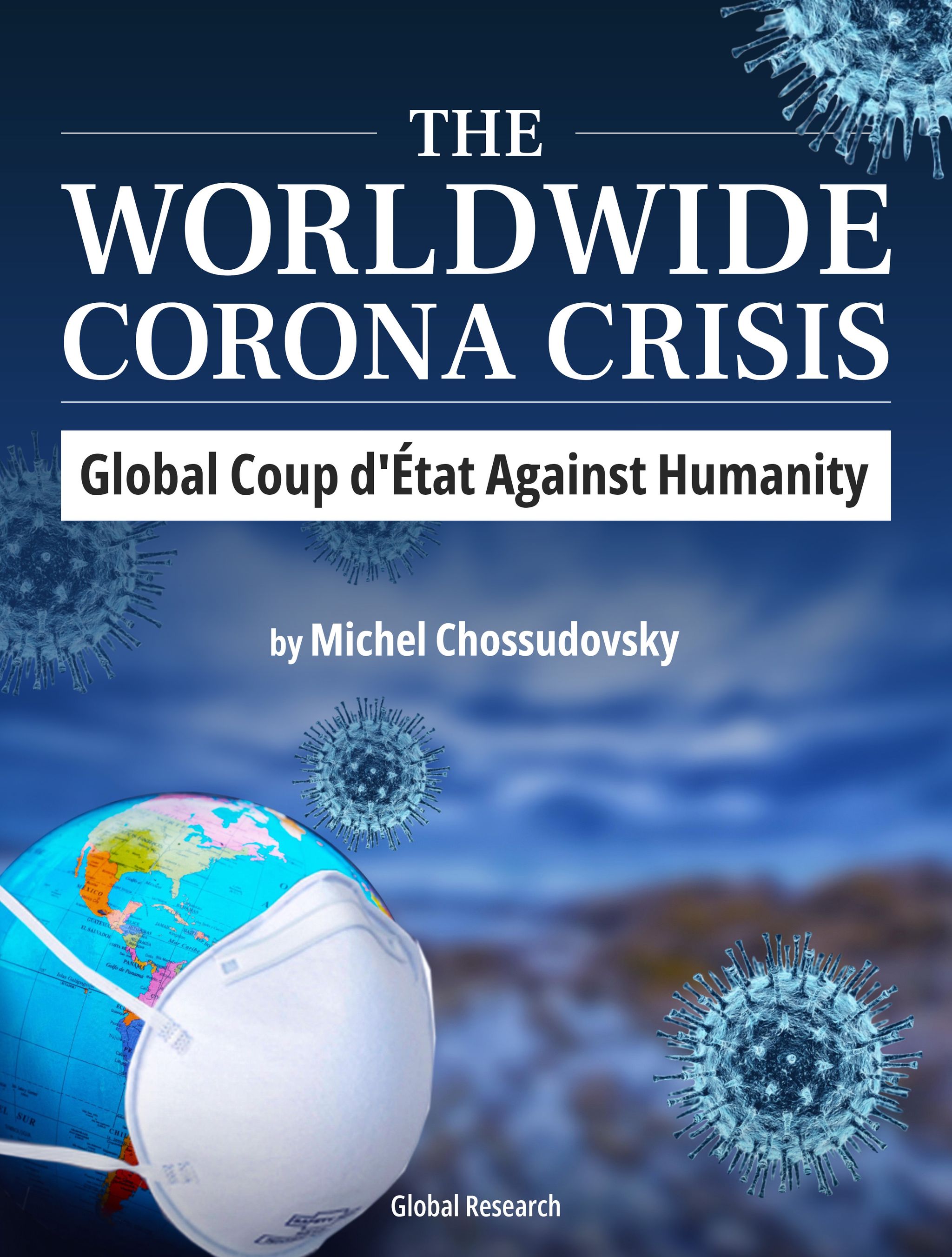 The Worldwide Corona Crisis, Global Coup d’État Against Humanity
The Worldwide Corona Crisis, Global Coup d’État Against Humanity
Destroying Civil Society, Engineered Economic Depression
By Michel Chossudovsky
Year: 2022
Product Type: PDF File
Pages: 164 (15 Chapters)
Price: $11.50
Purchase directly from the Global Research Online Store!




 The Worldwide Corona Crisis, Global Coup d’État Against Humanity
The Worldwide Corona Crisis, Global Coup d’État Against Humanity




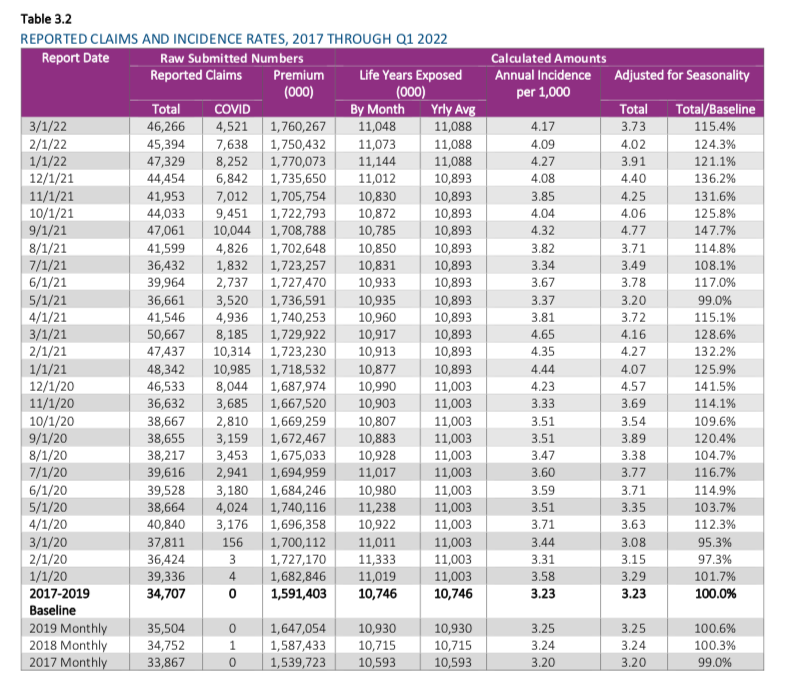





 Shocking: UK Government Admits COVID Vaccinated Children Are 4423% More Likely to Die of Any Cause & 13,633% More Likely to Die of COVID-19 Than Unvaccinated Children
Shocking: UK Government Admits COVID Vaccinated Children Are 4423% More Likely to Die of Any Cause & 13,633% More Likely to Die of COVID-19 Than Unvaccinated Children The Next Generation Says Good-Bye to Ursula von der Leyen’s Europe
The Next Generation Says Good-Bye to Ursula von der Leyen’s Europe NATO-Russia Proxy War: Revealing Signs of a Fading America: Scott Ritter, Michael Hudson
NATO-Russia Proxy War: Revealing Signs of a Fading America: Scott Ritter, Michael Hudson The Collapse of America: What History Teaches Us About the Rise and Fall of Empires. Prof. Alfred McCoy
The Collapse of America: What History Teaches Us About the Rise and Fall of Empires. Prof. Alfred McCoy Whose Grain Is Being Shipped from Ukraine? America’s GMO Agribusiness Giants to Take Control of Ukraine Farmland
Whose Grain Is Being Shipped from Ukraine? America’s GMO Agribusiness Giants to Take Control of Ukraine Farmland Uncovering the Corona Narrative: Was Everything Carefully Planned? Analysis by Ernst Wolff
Uncovering the Corona Narrative: Was Everything Carefully Planned? Analysis by Ernst Wolff The Crisis in Ukraine Is Not About Ukraine. It’s About Germany
The Crisis in Ukraine Is Not About Ukraine. It’s About Germany The Planned Fall 2022 “Epidemics Tyranny”
The Planned Fall 2022 “Epidemics Tyranny” Something Is Looming Geopolitically, and We Better Start Taking It Seriously
Something Is Looming Geopolitically, and We Better Start Taking It Seriously Trends in Mortality and Morbidity in the Most Vaccinated Countries : Twenty-one Proven Facts
Trends in Mortality and Morbidity in the Most Vaccinated Countries : Twenty-one Proven Facts A Letter to UK’s Chief Coroners Office on Disturbing COVID and COVID Vaccination Deaths
A Letter to UK’s Chief Coroners Office on Disturbing COVID and COVID Vaccination Deaths As the COVID Myths Explode, Delusions Are Shattering: Our Exit from Subservience Leads to Nuremberg 2.0
As the COVID Myths Explode, Delusions Are Shattering: Our Exit from Subservience Leads to Nuremberg 2.0 They’re Killing our Children: Will There be Doctors and Public Health Officials Fleeing for the Exits?
They’re Killing our Children: Will There be Doctors and Public Health Officials Fleeing for the Exits? Amish Farm Under Threat From U.S. Federal Government for Refusal to Abandon Traditional Farming Practices
Amish Farm Under Threat From U.S. Federal Government for Refusal to Abandon Traditional Farming Practices An Engineered Food and Poverty Crisis to Secure Continued U.S. Dominance
An Engineered Food and Poverty Crisis to Secure Continued U.S. Dominance After Data Show Vaccinated at Higher Risk of Dying from COVID, Canadian Province Ends Monthly Reports
After Data Show Vaccinated at Higher Risk of Dying from COVID, Canadian Province Ends Monthly Reports Johns Hopkins University Confirms: You Can be “Vaccinated” with a PCR Test, Even Without Knowing
Johns Hopkins University Confirms: You Can be “Vaccinated” with a PCR Test, Even Without Knowing Why Was Former President Trump’s Mar-a-Lago Estate Raided?
Why Was Former President Trump’s Mar-a-Lago Estate Raided? Israel Conquers the World
Israel Conquers the World The Dogma and History of Vaccination. Questioning “Germ Theory” is a Taboo
The Dogma and History of Vaccination. Questioning “Germ Theory” is a Taboo


























